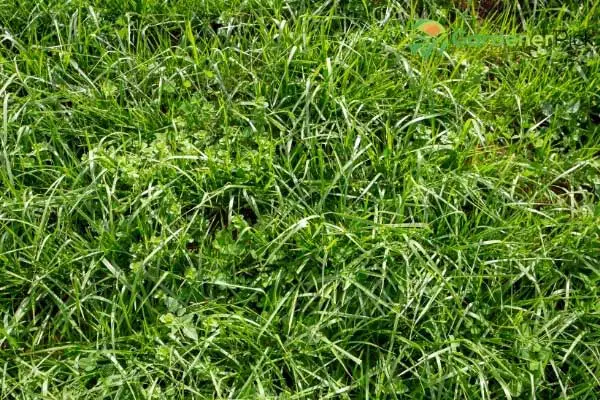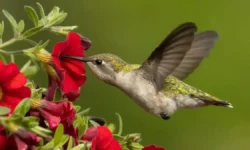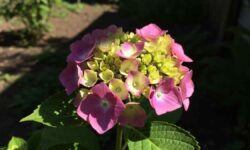Are you confused about the selection Tall Fescue Vs Bluegrass for your lawn? Are you facing difficulty in deciding which one is better for your lawn? Do you want to know the differences between these two kinds of grass?
Don’t go anywhere and read this article till the end. We are sharing the similarities and differences between the maintenance and nutritional requirements of these two kinds of grass.
Moreover, you’ll be able to choose the best one for your yard after reading this article.
Let’s compare the Tall Fescue and Bluegrass. Both are cool-season grasses. These are foot traffic tolerant. Bluegrass is not heat tolerant and goes dormant in hot weather. Moreover, it requires more nitrogen fertilizer as compared to Tall fescue. It is also vulnerable to weed growth in hot weather. However, tall fescue is ideal with only one drawback that does not fill the bare patches by itself and requires overseeding.
Tall Fescue and Bluegrass are the priority grasses for the lawn of cooler climates. These two turfgrasses differ in characteristics. That’s why they vary in maintenance requirements and environments to thrive. Mostly, it depends on your preference for which you are planting them. if your lawn experiences high foot traffic, obviously you will select a grass that is more tolerant. However, if you are just trying to improve the look of your lawn, you will go with any low maintenance turf type.
For better understanding, go through this article
Table of Contents
Identification of Tall Fescue And Bluegrass
Before we discuss the similarities and differences of Tall Fescue and Bluegrass, let’s briefly explain them, so that you can easily identify the turf type.
Tall Fescue
Tall fescue is one of the best turf types among cool-season grasses. Its scientific name is Festuca arundinacea. Its origin is in Asia, then it was introduced in Europe and America. It is medium to dark green in color, with a coarse texture. It has an extensive fibrous root system and it forms sods through rhizomes. it grows in the form of bunches. It survives well in the shady areas and the wet soil.

It has rolled vernation and pointed tips and this feature is its key to identification. Its leaves are smooth and shiny from the underside, while the upper surface has ribs giving a dull texture. Its stem is 3 to 4 inches tall that supports a nodded panicle.
Bluegrass
Among the bluegrasses, Kentucky Bluegrass(Poa pretenses) is mostly planted in the central and northern parts of the United States. It thrives well in extremely cold areas. It grows and forms a dense grass bed of rich emerald and blue-green in color.
Its leaves are smooth, soft, and boat-shaped with 6 to 12 inches in length. The stems can grow as long as 12 to 24 inches, but if mowed regularly it normally reaches the length of 4 to 6 inches.
Differences Between Tall fescue and Kentucky Bluegrass
You’ll be surprised to know that there are remarkable differences between Tall fescue and Kentucky Bluegrass. The only similarity is, both are cool-season grasses and grow well in the northern parts of the U.S.
Are you ready to have a comparison match between these two turf kinds of grass? If yes, have a look at the table below;
Table for differences (Tall fescue vs Kentucky Bluegrass)
Features | Tall Fescue | Kentucky Bluegrass |
Hardiness zone | Tall fescues are better suited for USDA zones 3 through 8. | The USDA zone for Bluegrass is 1 through 9. |
Seed growth rate | Its seeds normally take 1 to 2 weeks to germinate. | Its seeds take 3 weeks to germinate. |
Maintenance | It is low maintenance and doesn’t require frequent mowing as it grows in the form of bunches. | It requires moderate maintenance and mowing due to sod formations. |
Foot Traffic tolerance | Due to deeper roots, it tolerates foot traffic but if damaged, it requires reseeding. | Due to shallow rhizomes, it can be damaged by foot traffic. But it repairs itself. |
Sunlight requirement | It requires 4 hours of direct sunshine to survive. | It needs 8 hours of sunlight to thrive well. |
Shade tolerance | It is heat tolerant and also survives well on summer days. | It is shade tolerant and doesn’t like the summer sun. |
Water requirement | It normally requires1 to 1¼ inches of water per week. | It needs 2 inches of water per week in winter and 2 ½ inches in the summer. |
Weed growth vulnerability | It is weed resistant. | It is more vulnerable to weed growth in the summer. |
Dormancy rate | It doesn’t go dormant. | It goes dormant in summer and turns brown. |
Propagation | It grows in bunches and spreads in minimum capacity. | It has rhizomes that form pods and spread quickly. |
For your convenience, the detail of the comparison is given below. So, have a look to increase your knowledge.
Fertilizer Needs
The fertilizer requirements of both Tall fescue and Bluegrass are different.
Normally, Tall fescue needs less fertilizer as compared to Kentucky Bluegrass. For 1000 square feet of lawn, 1 pound of Nitrogen fertilizer is required. But it is highly recommended to perform a soil test using the soil test kit to identify which nutrient is deficient in the soil.
On the other hand, Kentucky Bluegrass requires 3 to 6 lbs of nitrogen fertilizer for 1000 square feet of lawn.
Weather Preferences
Though Tall fescue and Kentucky Bluegrass are cool-season grasses, Both of these have slightly different weather preferences.
Tall fescue is shade loving. It doesn’t mean that it will suffer in the hot weather. Actually, it requires 4 hours of direct sunlight to thrive. It can grow well in the areas under the shade of trees. It can withstand heat and dry conditions and be able to survive in drought.
The Kentucky Bluegrass loves the full sun in the winters. Moreover, it needs 8 hours of direct exposure to the sun to thrive well. It doesn’t feel good during the hot summer as this season induces dormancy. However, it regains strength with proper watering.
Color Of Tall fescue And Bluegrass
The Kentucky bluegrass lawn is well identified by its beautiful emerald and blue-green color. Its fine texture gives a sense of freshness even to walk on bare feet. Its blades smooth and soft with pointed ends.
The color of Tall fescue is medium to dark green. It has a coarse texture. It grows vertically and bunch type grass. Its leaves have long veins on the upper side that gives a dull appearance and a shiny flat surface on the underside.
Watering Requirements
The water needs of Kentucky Bluegrass and Tall fescue depends on the weather conditions.
Normally, both types of grasses require 1 to 1 1/4inches of water per week. However, Tall fescue has a deep root system that absorbs water from deep soil. This feature makes it well thrive even during drought.
The Kentucky Bluegrass needs 2 inches of water per week. However, during the summer it requires 2 ½ inches of water and goes dormant in high temperatures. But it gets life again after sufficient water supply. If the soil in your lawn is sandy, it requires ½ inches of water every third day.
Traffic Tolerance
The Tall fescue grows vertically in bunches. It has deep roots that’s why it tolerates foot traffic very well. But due to bunch type growth, it is unable to fill bare patches. For this purpose, reseeding is required. Preferably, it should be grown in the parks and sport patches where frequent mowing is not required.
While Kentucky Bluegrass withstands traffic very well. It spreads really fast and fills the bare patches itself. It forms rhizomes underground and self repairs the bare patches.
Soil conditions
The Kentucky Bluegrass grows well in aerated soil. It can also grow on sandy soil. It has a shallow root system that forms a network and spreads on the ground. It requires mowing to prevent thatch build-up. Moreover, due to sod formation, it is more susceptible to fungus attack.
On the contrary, Tall fescue grows well even on clay and alkaline soil. The secret for its successful growth is its deep root system. As it grows vertically, its established deep root system is able to gain water and nutrients from the deeper soil layers.
Weed and Disease Resistance
The Kentucky Bluegrass grows well in the northern areas of the U.S with extremely cold conditions. It loves full sun and reaches the peak growth in spring and fall. But in hot summers, it is more susceptible to diseases and weeds invasion. This type of grass requires 8 hours of direct sunlight to grow well.
On the other hand, Tall fescue is shade-loving grass. It grows well both in the northern and southern parts of the U.S. It requires 4 hours of direct sunlight to thrive. This feature makes it disease and weed resistant.
Can You Mix Tall Fescue And Bluegrass?
Most gardeners keep on asking if the Tall fescue and Bluegrass can be mixed. The answer is yes you can. If you want a uniform establishment of grass, you can mix these two types of grasses, Kentucky Bluegrass seeds 5 to 10 % and tall fescue seeds 90 to 95 %. The reason for this blend ratio is, due to the wide blades and vertical growth, it will not blend properly if mixed in half and half ratio.
As mentioned already, the tall fescue is unable to repair the bare patches due to a bunched appearance. While Kentucky Bluegrass spreads quickly and fills the bare patches due to underground rhizomes. That’s why the blend of these two kinds of grass gives a perfect lush green look. It not only maintains the appearance of your lawn but also helps in the reseeding, overseeding, and renovation.
Which is better Tall fescue or Bluegrass
Now, you might be wondering which grass is better for your lawn? The short answer is, the Kentucky Bluegrass and Tall fescue both are cool-season grasses. Both grow well in the northern regions of the United States. In addition, both are unique in characteristics.
But you’ll be able to decide better after reading the positive and negative points of these grasses.
Pros of Kentucky Bluegrass
- It spreads forming rhizomes and covers bare patches by itself.
- It thrives well in extreme cold northern areas of the United States.
- It tolerates foot traffic very well
Cons Of Kentucky Bluegrass
- It requires more nitrogen fertilizer as compared to Tall fescue.
- Due to sod formation, it even spreads in areas where it is not intended to reach.
- In hot summers, it goes dormant.
- It is susceptible to diseases and weeds invasion in hot weather.
Pros Of Tall fescue
- It thrives well in the northern and southern regions of the United States.
- It tolerates wear and tears more than the bluegrass.
- It is shade tolerant and grows well in shady areas.
- It doesn’t spread like bluegrass rather grows in bunches.
- It is heat tolerant, plus, weeds, and disease resistant.
- It doesn’t go dormant in the hot weather.
- It requires 1 lb nitrogen fertilizer per 1000square feet of lawn.
Cons Of Tall Fescue
- The only disadvantage is, due to vertical bunched type growth and deep roots, tall fescue doesn’t fill the bare patches of your lawn. For this purpose, reseeding is required.
Hopefully, now you can decide which grass is suitable for your garden. However, the option of a mixed blend of both types of grasses is always available. You can select according to the requirements of your lawn. If you want to grow grass at a shady location, give a try to the Tall fescue. Now, it is also available in other hybrid varieties that yield fine texture and denser turf.
Related Articles: How to Plant Grass Seeds on Existing Lawn
Conclusion
Finally, we concluded that Bluegrass and Tall fescue both make your lawn nice and lovely. You can choose any of them depending on your climate.
Planting a lush green lawn requires proper care and maintenance. Moreover, it also depends on the traffic stress, heat, drought, and disease tolerance of your selected grass.
The choice of perfect grass for your lawn will not only save bucks but also your precious time.
If you find this article helpful, don’t forget to share it with other gardeners.






